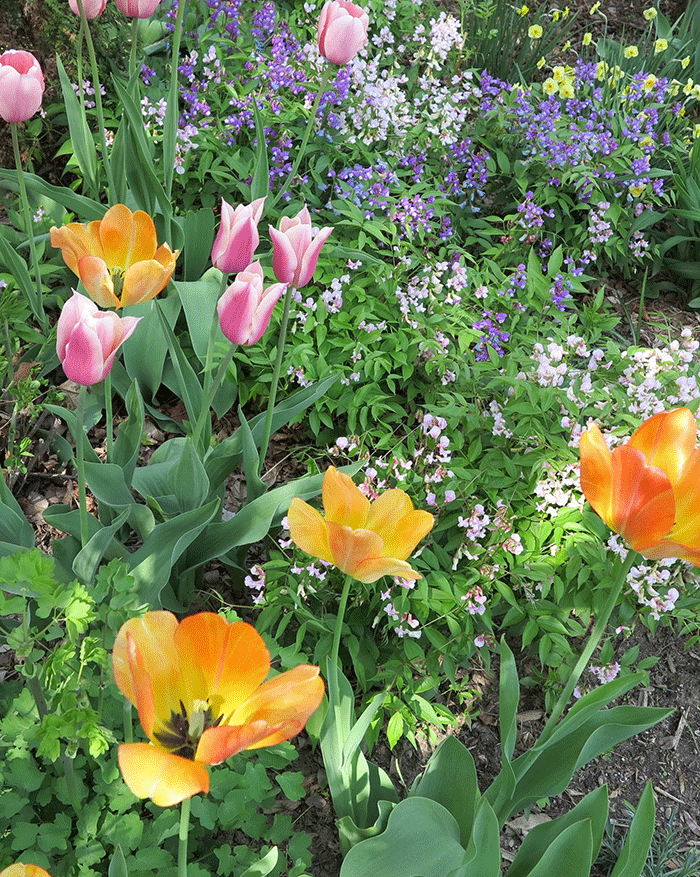
Spring is not the time to plant spring-blooming bulbs, such as hyacinths, daffodils and tulips, but it is the best time to plan where you’ll plant these bulbs a few months later, in the fall. I confess that I don’t enjoy planting bulbs, despite the promise of a more beautiful spring the following year. Usually, I’m in denial that another garden season is ending, and put off bulb planting until the weather is cold and damp, making the task even more unappealing. Of course, by the time autumn arrives, I’ve also forgotten where the spring gaps in colour were located. Here’s how I’ve solved the dilemma of deciding where to plant spring bulbs in the fall.
Throughout the spring, when the bulbs are in bloom, I take photos of the garden so I can refer to them later to determine where new bulbs need to be placed. I try to document different planting areas to show where clumps of colour are concentrated or absent, making sure to include shrubs and perennials in the images to provide context. Looking at these photos before I head out with bags of new bulbs helps orient myself better. The photos also remind me where large clumps of bulbs are situated, which helps me avoid accidentally slicing into them.
Besides snapping plenty of photos throughout spring, I take several blank plastic plant labels into the garden to mark future bulb-planting spots. By walking around when existing bulbs are in bloom, I can quickly see where there’s room for a few more bulbs — perhaps beside clumps of hostas and daylilies still leafing out or at the base of shrubs, not yet obscured by burgeoning perennials. If I’m really organized, I’ll take a marker out with me to write on the tags what type and colour of bulb might look best in that bare spot — pink tulips, miniature daffodils or tall alliums, for example.
Inserting these “reminder” tags deep into the soil, so that just their tips are visible, means they’re unobtrusive the rest of the season. But come fall, when I’m cutting back perennials, I’ll be able to find them and use them as a guide.

More tips for spring bulbs
To keep your existing clumps of spring-blooming bulbs healthy and productive, let all foliage die back naturally — no cutting, braiding or burying the leaves until most of them are brown. The ripening foliage helps feed next year’s blooms.
There are two optimum times to fertilize bulbs: once in late fall and again in very early spring, as the tips start to emerge and before they bloom. Use a soluble 10-10-10 or 10-15-10 for these feedings. If you don’t wish to use a synthetic fertilizer, gently scratch in some compost and a dusting of bone meal into the soil around the base of the bulbs to boost nutrients.

curious as to why my canna lillies did not bloom this summer. I had beautiful lush foliage but not a single flower. This would be the 3rd spring/summer that I planted the bulbs – after storing over the winter. Do the bulbs get “old”?? Should I just throw then away this fall and start fresh next spring?
Thanks for your help.
I have used the photo idea for several years now but take it one step further. I make copies of the photos and using a pen, I mark on the photo the spots where I want to plant and write the type and quantity of bulb on the back of the photo. This gives me a portable plan to carry with me when I’m planning, shopping or planting.
That’s an excellent idea! Thank you for sharing it with us.
Terrific idea – I was just pondering these questions today and made a photograph of my garden from the balcony.